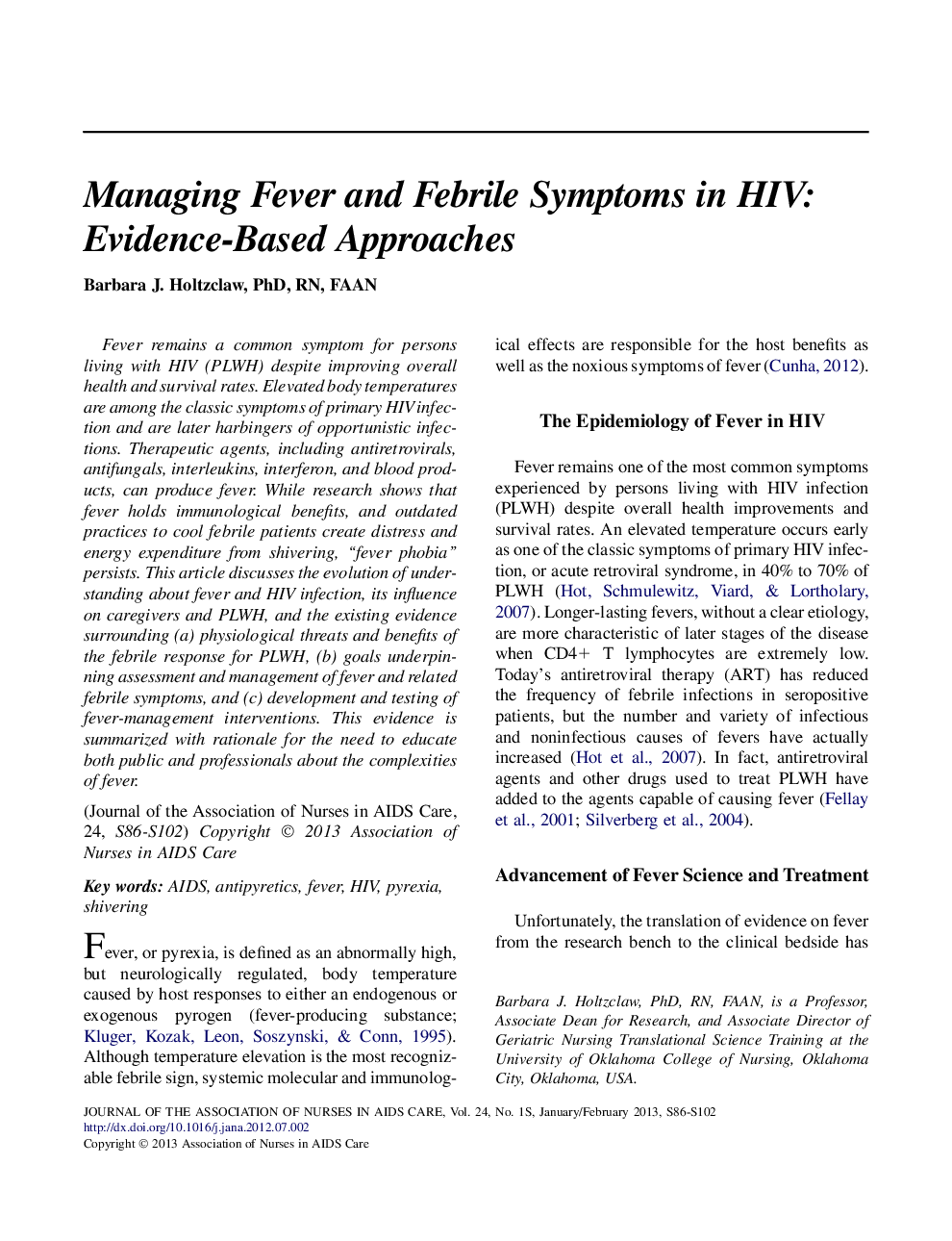| Article ID | Journal | Published Year | Pages | File Type |
|---|---|---|---|---|
| 2658774 | Journal of the Association of Nurses in AIDS Care | 2013 | 17 Pages |
Fever remains a common symptom for persons living with HIV (PLWH) despite improving overall health and survival rates. Elevated body temperatures are among the classic symptoms of primary HIV infection and are later harbingers of opportunistic infections. Therapeutic agents, including antiretrovirals, antifungals, interleukins, interferon, and blood products, can produce fever. While research shows that fever holds immunological benefits, and outdated practices to cool febrile patients create distress and energy expenditure from shivering, “fever phobia” persists. This article discusses the evolution of understanding about fever and HIV infection, its influence on caregivers and PLWH, and the existing evidence surrounding (a) physiological threats and benefits of the febrile response for PLWH, (b) goals underpinning assessment and management of fever and related febrile symptoms, and (c) development and testing of fever-management interventions. This evidence is summarized with rationale for the need to educate both public and professionals about the complexities of fever.
